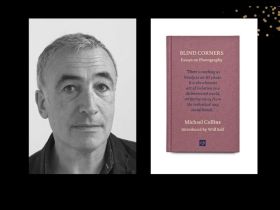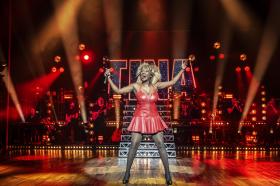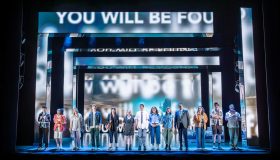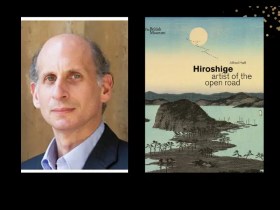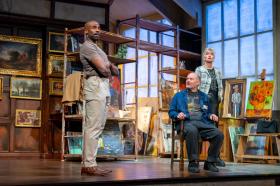Alfred Hitchcock was both gourmand and glutton. His physical girth reveals the extent that he loved his food. He has been quoted as saying whilst he abstained from eating eggs, he could willingly consume an English breakfast three times a day.
Hitchcock was essentially a `steak and potatoes` man and there is the apocryphal story of his lunching at the `21` Club on one of his first trips to New York City. David O. Selznick, the producer for whom `Hitch` would be directing `Rebecca` was picking up the tab; so Hitch sat through one round of steak and fries, followed by vanilla ice-cream and then he ordered the whole thing all over again.
But in addition to his personal fondness for food, there are at least ten of his films which reference and celebrate food in some way.
Street markets feature prominently in Hitchcock films; and whether they`re purveying flowers (the Nice flower market in `To Catch a Thief`) or fruit and vegetables (the Lower Marsh Street market in `Sabotage` and the old Covent Garden market in `Frenzy`) there`s a robustness and joie de vivre which Hitchcock associates with the selling (and consuming) of green groceries.
Hitchcock himself was the son of a Leytonstone (then part of Essex) green grocer who used to purchase supplies from another member of the family who had a wholesale outlet in the old Covent Garden market.
It is conceivable that Hitchcock was acquainted with and awed by the Dukes of Bedford who owned the Garden until about 1911 because the Russell family motto: `Que Sera, Sera` (visibly cut into the stone of the Garden arch) is the theme tune from `The Man Who Knew Too Much`.
Many of the pubs and cafes of the Garden feature in Hitchcock`s penultimate film, `Frenzy`. This very pub, the Globe, was rebuilt at Pinewood STudios bit by bit to recreate the 18thc original with its wattle-and-daub ceiling. But there has been a pub on this site even earlier. This is where Richard Blaney, the protagonist, loses his job for drinking too many brandies and forgetting to put the money in the till.
Whilst Nell of Old Drury on Catherine Street, Covent Garden, is where the two London businessmen (the doctor and the lawyer) tuck into wholesome English fare. I believe the scene, rather brief, was actually shot at the pub one day before they opened for lunch.
Simpsons-on-the-Strand, the old chop house-cum-carvery, was the site of the Thirties film, `Sabotage`. Hitch shot in the upstairs room because women were not allowed into the men`s grill room. This changed sometimes around the Eighties.
The scene mirrors same in the Joseph Conrad novel, `Secret Agent`, where the heroine and her brother Stevie are taken to lunch by the romantic male interest. In the film he`s an undercover policeman. In the book he`s merely the love interest.
Comments by Hitchcock about shooting the scene confirm my belief that he regarded eating as a ritual and food as a temple. All the metaphors- the damask linens- the starched chef`s whites- create the impression of religiosity- of litany and sacred rite.
There is a photo of Sylvia Sidney (and I think John Loder) filming the scene at the restaurant. It is not however on display in the dining room but in the bar area and it is well worth having a drink to take a look.
Living well was an aspiration of Hitch`s and like everything it was something he did in surpassing style.
The train journeys- the rubbernecking at the world- those wonderful travelogues and tourism promotions which feed our wanderlust and appetite are reasons why watching Hitchcock is like sitting down to dinner at the Captain`s Table.
Who can forget the meal despatched from the `21` Club whilst James Stewart is bedridden with a bum leg in `Rear Window`? Mouthwatering just to think about the steak and fries.
Who can forget the quiche Cary Grant serves the insurance man in the scene at that fabulous villa on a hilltop above Cannes in the south of France? (`To Catch a Thief`)
Whether it`s the restaurant in Morocco where you eat chicken with your finger (`The Man Who Knew Too Much`) or a roustabout pub in Mayfair (`Stage Fright`) or a Cordon Bleu feed in `Frenzy` or trout which is `just a little bit trouty` on a train journey in `North by Northwest` Alfred Hitchcock stimulates our taste for life`s finer things.
Geez, I`m starving. What`s to eat around here?
Bon appetit!
Sandra Shevey interviewed the Master in Hollywood in 1972. He had already eaten. She had not. The interview stimulated an interest in the director`s fondness for cities and the manyepicurean pleasure which they afford. Sandra has lectured on and about Hitchcock cityscape and runs tri-weekly Alfred Hitchcock location walks around London which alternate with a New York City walk.
